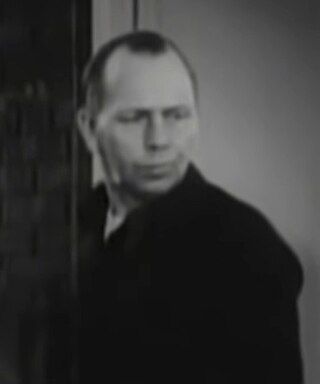
Jack Benny was an American entertainer who evolved from a modest success playing the violin on the vaudeville circuit to one of the leading entertainers of the twentieth century with a highly popular comedic career in radio, television, and film. He was known for his comic timing and the ability to cause laughter with a long pause or a single expression, such as his signature exasperated summation "Well! "

John Florence Sullivan, known professionally as Fred Allen, was an American comedian. His absurdist topically-pointed radio program The Fred Allen Show (1932–1949) made him one of the most popular and forward-looking humorists in the Golden Age of American radio.

The Jack Benny Program, starring Jack Benny, is a radio and television comedy series. The show ran for over three decades, from 1932 to 1955 on radio, and from 1950 to 1965 on television. It won numerous awards, including the 1959 Emmy for Best Comedy Show, and is generally regarded as a high-water mark in 20th-century American comedy.

Moon Over Miami is a 1941 American musical comedy film directed by Walter Lang with Betty Grable and Don Ameche in leading roles and co-starring Robert Cummings, Carole Landis, Jack Haley and Charlotte Greenwood. It was adapted from the play by Stephen Powys. This was previously adapted into a 1938 film titled Three Blind Mice directed by William A. Seiter and starring Loretta Young, Joel McCrea and David Niven

The Horn Blows at Midnight is a 1945 comedy fantasy film directed by Raoul Walsh, and starring Jack Benny.
Michael Preston is an English international film and television actor, and singer, sometimes credited as Mike Preston.

Rolfe Sedan was an American character actor, best known for appearing in bit parts, often uncredited, usually portraying clerks, train conductors, postmen, cooks, waiters, etc.

Vivacious Lady is a 1938 American black-and-white romantic comedy film directed by George Stevens and starring Ginger Rogers and James Stewart. It was released by RKO Radio Pictures. The screenplay was written by P.J. Wolfson and Ernest Pagano and adapted from a short story by I. A. R. Wylie. The music score was by Roy Webb and the cinematography by Robert De Grasse.

Caught in a Cabaret is a 1914 short comedy film written and directed by Mabel Normand and starring Normand and Charlie Chaplin.

Harry Tenbrook was a Norwegian-American film actor.

Tin Pan Alley is a 1940 musical film directed by Walter Lang and starring Alice Faye and Betty Grable as vaudeville singers/sisters and John Payne and Jack Oakie as songwriters in the years before World War I.

She Knew All the Answers is a 1941 American romantic comedy film directed by Richard Wallace, and starring by Joan Bennett, Franchot Tone and Eve Arden. It was produced and distributed by Columbia Pictures. The film tells a story about a chorus girl who wants to marry a rich playboy, but first has to prove herself to his financial advisor. The screenplay was written by Kenneth Earl, Curtis Kenyon, and Harry Segall, adapted from a short story written by Jane Allen entitled "A Girl's Best Friend Is Wall Street," published in 1938 in Cosmopolitan Magazine.

Louis Davis was an American film actor. He appeared in over 75 films between 1916 and 1948.

Diamond Horseshoe is a 1945 American musical film starring Betty Grable, Dick Haymes and William Gaxton, directed and co-written by George Seaton, and released by 20th Century Fox. It was filmed in Technicolor in Billy Rose's Diamond Horseshoe, a nightclub located in the basement of the Paramount Hotel. The film's original score is by Harry Warren and Mack Gordon, introducing the pop and jazz standard "The More I See You".

52nd Street is a 1937 American drama film directed by Harold Young and starring Ian Hunter. Leo Carrillo and Pat Paterson. An independent production by Walter Wanger it was distributed by United Artists. It portrays the rise of 52nd Street in Manhattan as a major hub of nightclubs in the 1930s.

Champagne Waltz is a 1937 American comedy film directed by A. Edward Sutherland and starring Gladys Swarthout, Fred MacMurray and Jack Oakie. The theme of the film was inspired by the eponymous hit song, written in 1934, by the compositional pair Con Conrad and Ben Oakland. It is one of five movies produced by Paramount in the 1930s featuring Swarthout, a very popular Metropolitan Opera mezzo-soprano. The studio was attempting to build on the popularity of Grace Moore, another opera singer, who had also expanded her talents into movies. The film's sets were designed by the art director Ernst Fegté working with Hans Dreier. The costume designer was Travis Banton.

Melody for Two is a 1937 American musical film directed by Louis King and starring James Melton, Patricia Ellis and Marie Wilson.
Manhattan Moon is a 1935 American romantic comedy film directed by Stuart Walker and starring Ricardo Cortez and Dorothy Page. It was released on August 5, 1935.

George Holmes was an American film and television actor.
















